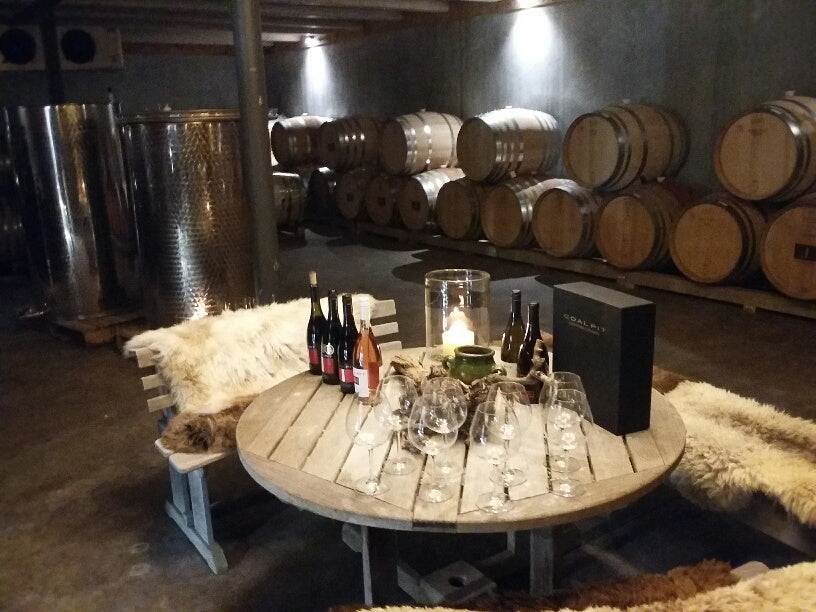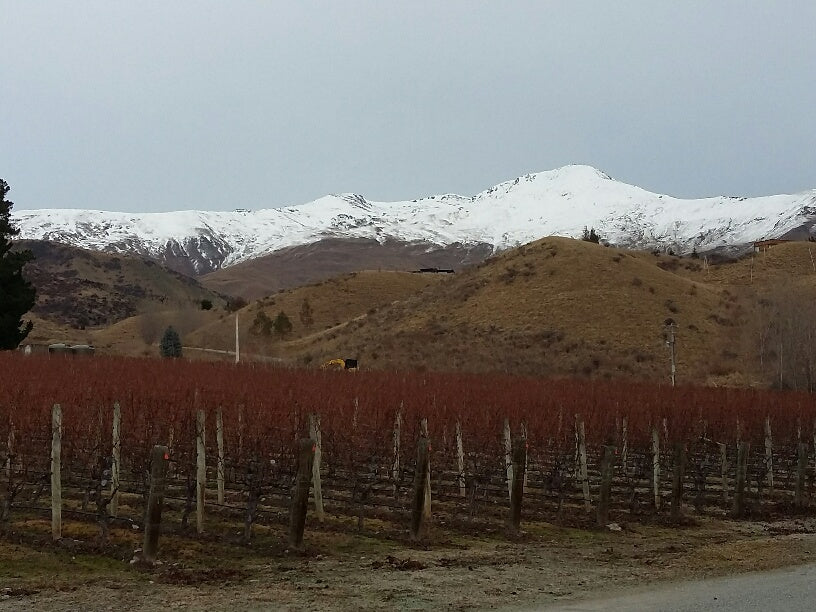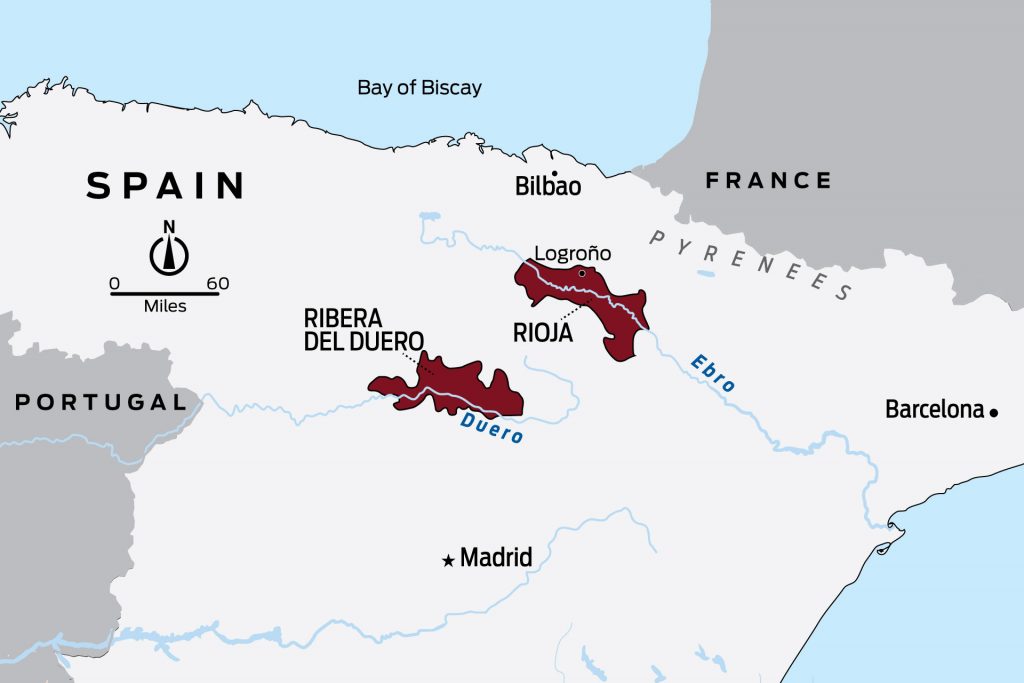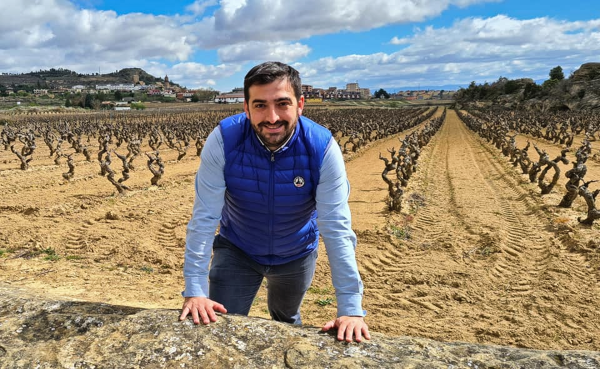Tuesday morning starts with a trip to Provisions – a quality café a short walk from our accommodation to prepare for a long day of tasting. It is a very nippy start at -3 degrees Celsius; each lawn and pasture is covered in a crunchy layer of frost, puddles atop outside barrels turned into miniature ice rinks.

A short drive for our first visit is to Gibbston Valley. Gibbston is the closest major wine region to Queenstown, straddling the Kawerau Gorge. With the towering hills on both north and south sides of the valley, it is the coolest and wettest of the sub-regions of Central, and the fruit ripens weeks after those in the nearby Bannockburn region. Anika, the winemaker from Coal Pit, drives us up the steep hillside to the winery. She describes the glacially formed schist soils, and points out the coal seams bordering the vineyards that give the property its name. The winery is custom-built – gravity fed and in immaculate form; we taste the full line-up of wines, including back vintage Pinot Noir in the chilly but beautiful barrel room.

A short drop down the hill we arrive at Mt Edward. Duncan gives us a crash course history of the site while his Staffordshire Bull Terriers wrestle playfully in front of the roaring fireplace. His top single vineyard Pinots are some of the best we’ve tried so far in the trip. He is one of the innovators of the region; not content to produce just classic wine varieties, he has experimented with a Vermouth, an Oloroso sherry, orange wine, and this year is leaving a crop of Riesling outside to shrivel. Who knows what it will transform into!

Then we’re back on the road out to Cromwell, next to the picturesque Lake Dunstan, to meet Elbert from Wild Earth wines. It’s lunchtime, and he proudly shows us another creation: ‘Stoakers’ is a restaurant under a giant marquis, serving food cooked in modified Pinot Noir barrels. The name cleverly alludes to the cooking technique, partly smoking, partly steaming, in oak. The result is some of the most succulent pork, beef, chicken, and salmon in recent memory. Accompanying this, of course, is the full line-up of Wild Earth wines, opening with an impressive Pinot Rosé and finishing with their top single vineyard Earth & Sky Pinot Noir.

Our next leg of the journey takes us South, alongside the bottom of the man-made lake created by the Clutha Dam – across the gorge we can see the construction of the new arms of the Central Otago Rail Trail bike path. Sections of the trail cantilever off sheer rockfaces and continue over suspension bridges. Once completed, it will no doubt draw a wave of keen cyclists to the region to sample the local juice.

Past Clutha we arrive in Alexandra. This is the Southern-most wine region in New Zealand – and up until recent new plantings in Chilean Patagonia the southern-most in the world. Perhaps the hottest and coldest and driest parts of NZ – it’s easy to see why the vines struggle in the harsh conditions. Three Miners is our first destination; Paul and Kirsten host a tasting of their wines. They grow grapes on an impressive 16 hectares of vines, with extensive overhead sprinkler systems to keep frost at bay at critical times of the growing season.

Three Miners only keep 11% of the best fruit themselves to make wine from, the rest is sold to other nearby producers. I was surprised to hear that a full half of grapes from Central leave the region, trucked over 700km north to large commercial wineries in Marlborough – often blended with portions of Marlborough juice to make lighter, fruitier and cheaper wines bearing the ‘Central Otago’ label. The previous evening there was a vigorous discussion around the dinner table as to whether these wines really represent the region. Several of the local growers are seeking some way to differentiate the wines made from 100% Central grapes, pressed, fermented, and bottled locally.
Our last winery visit of the trip is Judge Rock, a small 4-hectare hill site on the outskirts of Alexandra. They grow exclusively Pinot Noir and an Austrian grape called St Laurent. In addition to their excellent Pinot they have made a ‘Blanc de Noir’ – essentially a white wine made from Pinot Noir (or a colourless Rosé) which has a lovely spicy finish. Their most recent unique creation is fortified Port-wine made from St Laurent, a decadent sweet chocolatey goodness that rounds the journey nicely. It’s back to Arrowtown, and a flight back to Wellington the next morning.

It has been an illuminating trip, several years since my last visit and my first in mid-winter. The evolution of the region is clear – the recognition of the wines here are due to a combination of their quality, their connection to the unique terroirs, and of course the sheer natural beauty of Central Otago. The future in the near term is something of a question mark, with the total absence of international visitors and the global restaurant market coming to something of a standstill there are many uncomfortable questions facing growers and winemakers alike. One thing that won’t change is the high quality of the wines produced here, along with the pride and passion of those that make them. I’ll be back again, but in the meantime we’ll do our part to support our Kiwi growers with our appreciation and appetites.



